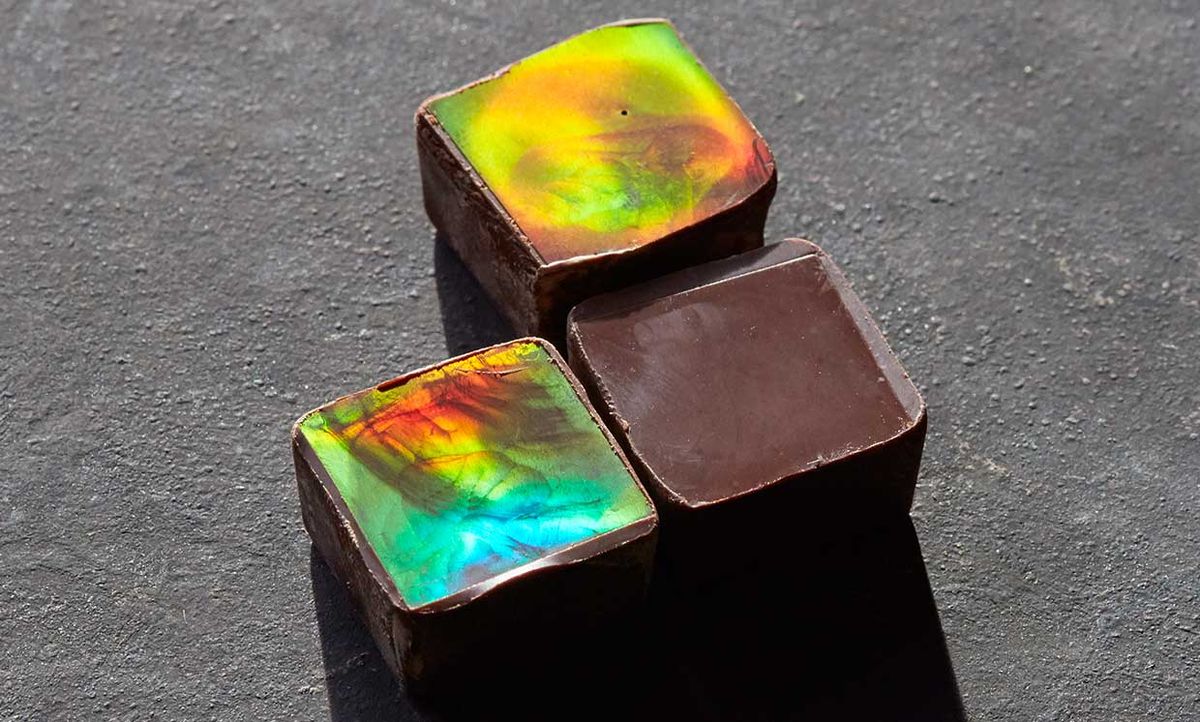While so many of us are working at home during the coronavirus pandemic, we do worry that serendipitous hallway conversations aren’t happening.
Last year, before the pandemic, it was one of those conversations that led researchers at ETH Zurich to develop a way of making chocolates shimmer with color—without any coloring agents or other additives.

The project, announced in December, involves what the scientists call “structural color”. The team indicated that it creates colors in a way similar to what a chameleon does—that is, using the structure of its skin to scatter a particular wavelength of light. The researchers have yet to release details, but Alissa M. Fitzgerald, founder of MEMS product development firm AMFitzgerald, has a pretty good guess.
She explains that Iridescence in nature (like that inside oyster shells and on the wings of butterflies) involves nanoscale patterns in the form of lines, plates, or holes. To make iridescent chocolate, she surmises, the researchers likely created a nanotech chocolate mold, using e-beam lithography to etch lines of about 100 nm wide on a glass or silicon wafer.
The ETH researchers hope to get their technique for coloring chocolate out of the lab and into the mass market. Meanwhile, during the pandemic shutdown, some tech professionals have been playing with rainbow chocolates of their own, like software engineer and startup founder Samy Kamkar, recently profiled in the New York Times. (You can only bake so much bread, after all.)
Chocolate is only the beginning for nanocolors, Fitzgerald says: “The combination of nano- and micro-technology fabrication techniques with atypical materials like food, fabric, paper and plastic is going to lead to some really exciting new products as well as improve or enhance existing products. For example, Teijin Fiber Japan uses structural color methods to make “Morphotex” fabric, named after the iridescent Morpho butterfly, recently demonstrated in the concept Morphotex Dress. Everyday objects are poised to benefit from advances in nanotechnology.”
Tekla S. Perry is a former IEEE Spectrum editor. Based in Palo Alto, Calif., she's been covering the people, companies, and technology that make Silicon Valley a special place for more than 40 years. An IEEE member, she holds a bachelor's degree in journalism from Michigan State University.



